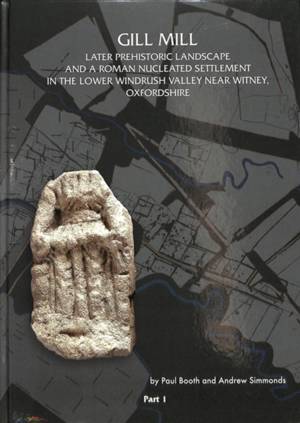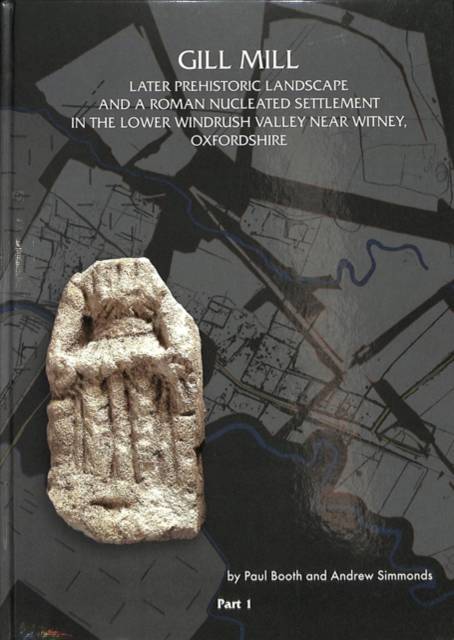
- Afhalen na 1 uur in een winkel met voorraad
- Gratis thuislevering in België vanaf € 30
- Ruim aanbod met 7 miljoen producten
- Afhalen na 1 uur in een winkel met voorraad
- Gratis thuislevering in België vanaf € 30
- Ruim aanbod met 7 miljoen producten
Zoeken
Gill Mill
Later Prehistoric Landscape and a Roman Nucleated Settlement in the Lower Windrush Valley at Gill Mill, Near Witney, Oxfordshire
Paul Booth, Andrew Simmonds
€ 48,95
+ 97 punten
Omschrijving
The valley floodplain landscape covered by the Gill Mill quarry, almost 130ha, was intensively exploited from about 300 BC at a variety of Iron Age settlements. The largest of these remained in occupation into the early 3rd century AD, but meanwhile a large nucleated settlement grew up around a road junction roughly 1km distant to the NW. This became the sole focus of occupation, covering an area of about 10ha. Featuring multiple ditched enclosures, some in very regular layouts associated with one of the roads, the settlement contained relatively few identified buildings and appears to have had a specialized economic role related to systematic cattle management, illuminated in part by large finds and environmental assemblages. It may have been an integral component of a wider estate holding and perhaps had an administrative focus (including a shrine) at its unexcavated center. It is notable that occupation of the site had almost entirely ceased by about AD 370.
Specificaties
Betrokkenen
- Auteur(s):
- Uitgeverij:
Inhoud
- Aantal bladzijden:
- 916
- Taal:
- Engels
- Reeks:
- Reeksnummer:
- nr. 42
Eigenschappen
- Productcode (EAN):
- 9781905905423
- Verschijningsdatum:
- 20/09/2018
- Uitvoering:
- Hardcover
- Formaat:
- Genaaid
- Afmetingen:
- 210 mm x 297 mm
- Gewicht:
- 4042 g

Alleen bij Standaard Boekhandel
+ 97 punten op je klantenkaart van Standaard Boekhandel
Beoordelingen
We publiceren alleen reviews die voldoen aan de voorwaarden voor reviews. Bekijk onze voorwaarden voor reviews.











